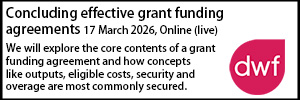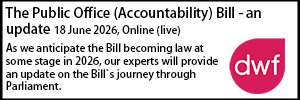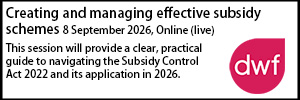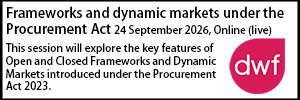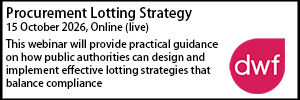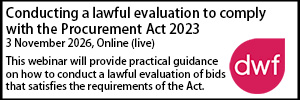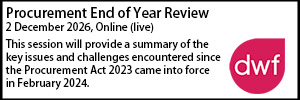Procurement Act government guidance – Perhaps 'not a reliable method of interpretation of the law'?
- Details
Andrew Millross looks at what might happen where there is a possible misalignment between the words of the Procurement Act 2023 and government guidance.
I have been reflecting that there are several places where the Cabinet Office guidance on the Procurement Act 2023 (the Act) does not appear to align with the plain words used in the Act. This is mostly where the guidance states that there is no intention to change the existing law despite very different wording being used in the Act.
There have been a couple of recent decisions which have caught my eye as to how the courts might approach this.
Lancashire County Council v Brookhouse Group
The first is the procurement case of Lancashire County Council v Brookhouse Group[1]. The case decided that a contracting authority cannot reduce the challenge period for an ineffectiveness challenge from six months to 30 days by providing ‘reasons’ to a single bidder, rather than publishing a contract award notice.
One of the arguments used by Lancashire County Council to challenge this was from the wording of the equivalent provision in the new Act. They argued that, as it had not been suggested that the Act was making significant changes to the time limits, the wording in the Act could be used to interpret the current law. The Act reduced the challenge period to 30 days where the challenger ‘knew or ought to have known about the circumstances giving rise to the claim’. The Court of Appeal gave this argument short shrift, indicating that despite the guidance that the Act will change the legal position. They pointed out that the current law is interpreted by reference to European law and was often copied word for word from it. The new provisions are ‘plainly different’ using new words and concepts that are not to be interpreted by reference to European law.
Smoke House & Curing House
The second case I spotted was Smoke House & Curing House[2] on the Building Safety Act 2022 in the First Tier Tribunal (the tribunal). The tribunal decided that government guidance on counting the number of storeys to see if a building was a higher risk building (HRB) was ‘not a reliable method of interpretation of law’. The tribunal said that the guidance ‘appears not only to add to the statutory provisions but also to contradict them’ by providing additional exceptions to what is a storey from those set out in the legislation.
Following the tribunal decision, the Government issued further guidance telling building owners to ignore the tribunal decision and follow the guidance, although they are ‘considering the decision’. This was on the basis that tribunal decisions are not binding on future tribunals (which is correct) and the tribunal did not have the statutory function to determine whether my building was a HRB (which was also correct, although the test the tribunal applied was exactly the same as the test for whether a building is a HRB). The Government statement did not address the fundamental point that the tribunal was prepared to say that government guidance did not accurately reflect the law and was prepared to make its decision on that basis.
What do these cases show?
These cases show how the courts will be prepared to interpret the Procurement Act 2023 based on what the words used mean, rather than what government guidance says. It is important to realise also that the guidance has been published, as the Cabinet Office states 'to provide technical guidance and help with interpretation and understanding'. It is not statutory guidance and does not have any legal status.
If the Government adopts a similar ostrich approach as it did with the advice to building owners to follow the guidance and ignore the tribunal decision, this may also get short shrift.
Andrew Millross is a Consultant Solicitor at Anthony Collins.
[1] Lancashire CC v Brookhouse Group [2024] EWCA 717
[2] Smoke House & Curing House, 18 Remus Road, E3 2NFLON/00BG/HYI/2023/0024
Sponsored articles
Unlocking legal talent
Walker Morris supports Tower Hamlets Council in first known Remediation Contribution Order application issued by local authority
Contracts Lawyer
Legal Director - Government and Public Sector
Lawyer (Planning and Regulatory)
Locums
Poll
15-07-2026 11:00 am































